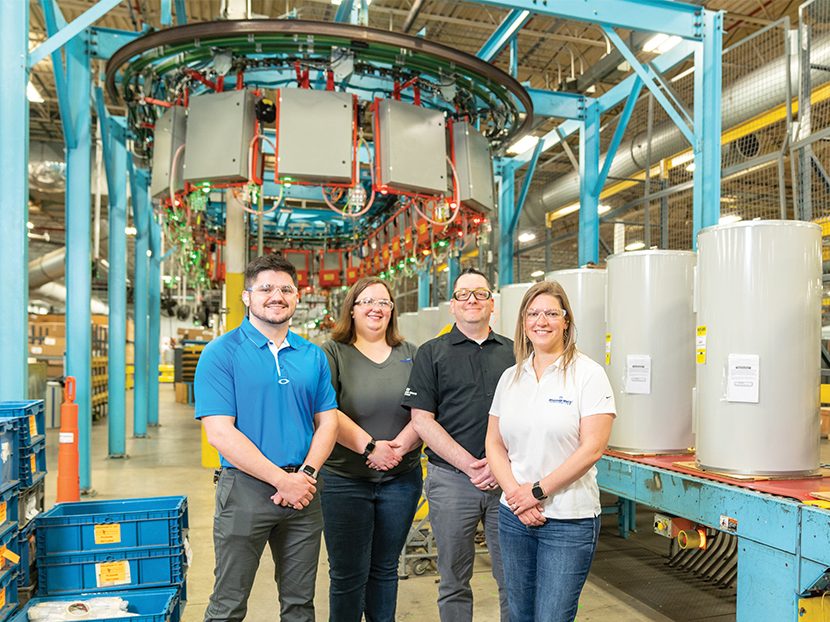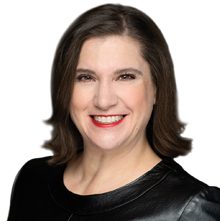Changing the Roadmap of American Manufacturing
Bradford White Corp. celebrates its anniversary in the wholesale distribution channel.

In 1991, Bradford White Corp. (BWC) was part of a foreign-owned conglomerate, with the parent company in growth mode — and eying the purchase of a competitor. To do so, it needed to sell off a portion of BWC. At the time, Bob Carnevale and another long-time BWC executive, Dick Milock (general manager of the Middleville, Mich., manufacturing facility) saw the opportunity to purchase it. Through this purchase, it allowed Bradford White to focus on a commitment to creating jobs in American manufacturing.Success favors the bold, and with their drive for manufacturing quality products in the United States, coupled with a commitment to its contractor customers, they purchased BWC in 1992. They now celebrate 30 years of partnerships. However, in the beginning, there were pushback and challenges.
We sat down with Bruce Carnevale, President and CEO, to learn more of the company’s history, how the vision became a reality, the challenges his father, Bob Carnevale, and business partner Dick Milock encountered, and the growth of the company today.
Ruth Mitchell: Bruce, from historical accounts, the idea to bring a company to market that would only sell through wholesale distribution was met with pushback. Why did folks assume it would fail?
Bruce Carnevale: Thanks, Ruth. Looking back, it was unusual for a manufacturer to commit to the professional channel, particularly as the retail channel and the DIY trend was growing so much. Success in the water heater business, as with many manufacturing operations, is largely dependent upon unit volume. By focusing solely on the wholesale channel, it didn’t make sense to many back in 1992 that Bradford White was essentially eliminating half of our market potential. My father and the leadership team saw a different path to success.
RM: Your father was a man of strong convictions. What was his response to those who thought the business plan was too radical? What were the cornerstones to the belief that the idea would work?
BC: My father was very competitive but, more importantly, he truly believed in our business model and in our employees and customers. The cornerstones of our business plan were pretty simple: Loyalty to the trade would create loyalty to Bradford White; we were adamant about maintaining our manufacturing operations in America; and we provided our customers with features, benefits and new products that allowed them to compete successfully against the retail product offerings.
RM: On July 2, 1992, the new Bradford White Corp. was formed as an ESOP; a forward-thinking idea. What prompted the idea of having employee-owners, and what benefits would come from the implementation?
BC: Not many people know this, but the idea actually came from the U.S. Department of Justice, which had to approve the acquisition of the “new” Bradford White from our parent company. It was one of several requirements for them to approve the acquisition. Employee ownership helps foster an entrepreneurial, customer-focused culture.
RM: Since then, Bradford White has committed to manufacturing its products in the United States. Please describe the impact to the company of investing in American manufacturing and the communities and team members it supports.
BC: There are so many things that my father was proud of, but he was most proud that Bradford White was able to provide so many people with good-paying manufacturing jobs. To this day, that is extremely important to us. As you mention, it is not just about Bradford White and our employees, but also the communities that we are so closely connected to.
We are working harder than ever to ensure that we continue our record of good corporate citizenship by supporting our communities through various charitable-giving initiatives and joint development and infrastructure projects.
RM: Within each business plan, there are successes as well as what I call ‘educational opportunities,’ i.e., bumps in the road. Will you highlight the success markers and how they have impacted the company? And, if and how the challenges turned out to be benefits.
BC: Really, Ruth? This could take up the entire interview! We’ve certainly had our share of “educational opportunities” with product introductions that weren’t successful, and some employees who unfortunately were not able to fit into our customer-focused culture. However, there are many more success stories where we’ve been able to turn a challenge into an opportunity and give our customers what they needed to win.
One example, going way back to 2003, was the flammable vapor ignition resistant (FVIR) standard. This challenge gave us the opportunity to design and manufacture our Defender Safety System, which our customers quickly told us they thought was the best FVIR solution, and I think that would probably be the consensus of our customers today.
RM: Bradford White’s commitment to professional installers and sale through wholesale distribution only showcases partnerships in action. And the company is laser-focused on working together in the channel for success. Over the years, what tools/opportunities were developed to help channel partners deliver on their mission to their customers?
BC: As mentioned earlier, many of the “tools” we provided were new products and new features which helped our customers create value for their customers. We are very close to all our channel partners, and work very hard to ensure that we are vested in their success. I think our customers know that, feel that and appreciate that we are not perfect, but we are always working to ensure they are successful.
We’ve always been heavily involved in training, and in the past few years, we’ve enhanced how we deliver training materials and marketing content to help our professional customers. Take a look at our For the Pro platform, including its training components.
RM: How has the business model changed/adjusted since 1992, and how is it growing and evolving for the path toward the next 30 years?
BC: The core principles haven’t changed. We want our product installed by professionals and their preferred choice is, in most cases, still their local wholesaler. But clearly there has been some blurring of the lines between the wholesale and the retail channels, with traditional retailers entering the wholesale space and selling to professionals. E-commerce platforms have also had tremendous growth in our product categories, and we expect that will continue.
RM: The road traveled has been long and filled with incredible stories of hard work, compassion, dedication and teamwork. What does the anniversary mean to Bradford White and the industry?
BC: I think it is a confirmation of our commitment to our customers. There have been so many changes over the past 30 years — changes in people, changes in technology, changes in regulations, consolidation at every level— but through all of the change, we’ve remained committed to our customers’ success at every level, and the success of our industry and other business partners. Customer centricity seems to transcend all the changes, and I expect that it will continue to for the next 30 years.
RM: Lastly, how is the company celebrating the anniversary? What do you imagine would be a toast made by the founding fathers to mark the occasion?
BC: Well, we would have had a 30th anniversary sales meeting, but our sales meetings are legendary, and they take two years to plan. So, given all of the uncertainty about travel and meetings, we took a different approach with smaller events and clever ways to recognize this important milestone throughout the year.
I imagine a toast might be, “Well, we beat the over/under of only lasting 18 months!”





